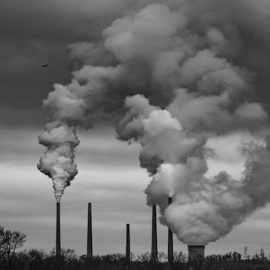

This article is an excerpt from the Shortform book guide to "Unsettled" by Steven E. Koonin. Shortform has the world's best summaries and analyses of books you should be reading.
Like this article? Sign up for a free trial here.
How much has Earth warmed in the last couple of hundred years? What constitutes an actual change in climate?
Former energy industry scientist Steven E. Koonin contends that the Earth’s temperature has warmed since 1900. However, he says that we need to consider two more patterns that contribute to our overall understanding of the matter.
Continue reading for Koonin’s assessment of the global temperature increase.
How Much Has the Earth Warmed?
Before assessing human impact on global warming, scientists naturally ask about the extent of the global temperature increase itself. In this respect, Koonin agrees with the scientific consensus: The Earth’s average surface temperature has risen by about 1°C (1.8°F) since 1850, with a particularly sharp increase beginning in 1980.
To understand climate data, however, Koonin asserts that we need to understand what “climate” means in the first place. Although many laypeople conflate climate with weather, Koonin defines climate as a region’s average weather across a long period of time—typically 30 years. This means we can see climate change only over longer timespans because variations in shorter timespans might not affect a region’s average weather in the long term.
(Shortform note: In the US, the National Oceanic and Atmospheric Administration (NOAA) releases the US Climate Normals every 10 years, which are reports of the country’s climates. These reports measure 30-year averages of temperature, rainfall, and other parameters.)
In light of this definition, Koonin examines scientific findings showing the average surface temperature anomalies from 1850 to 2020. These anomalies are differences in the globe’s temperature from its average temperature over a longer term. For example, if a region’s average temperature from 1900 to 2000 was 5°C, and its average temperature in 1960 was 5.4°C, then 1960 represents a temperature anomaly of 0.4°C.
Average surface temperature anomalies rose 1.1°C (2°F) globally between 1900 and 2020, a rate of about 0.09°C (0.16°F) per decade. So, Koonin grants that the temperature has risen globally since 1900.
(Shortform note: Although temperature is the standard proxy for climate change, it bears mentioning that climate scientists consider various other measures to track climate change. For instance, they commonly measure precipitation, wind speed, humidity, and cloud cover to get a more holistic view of the changing climate.)
However, Koonin points out two further important patterns: First, although the graph shows a clear long-term trend, it fluctuates dramatically in short-term intervals. Because of this fluctuation, Koonin notes that changes over a few years don’t necessarily amount to climate change.
(Shortform note: Some of these short-term fluctuations have clear natural causes. For example, researchers estimate that the eruption of Mount Pinatubo in 1991—which ejected ash more than 40 kilometers into the stratosphere—caused the Northern Hemisphere to cool by 0.5 to 0.6°C, as it created an aerosol cloud that reflected sunlight back into space.)
Second, the rate of temperature increase wasn’t uniform across 120 years—indeed, from 1940 to 1980, temperatures actually decreased an average of 0.05°C (0.09°F) per decade. Koonin argues that this complicates the narrative that human influences have consistently led to warmer temperatures.
(Shortform note: While the exact cause of the slight cooling between 1940 and 1980 is unknown, some experts speculate that it was caused by rapid industrialization in the Northern Hemisphere post World War II. Specifically, they suggest that rapid industrialization led to unprecedented consumption of fossil fuels, which in turn flooded the atmosphere with sulfate aerosols that had a cooling effect on the globe.)

———End of Preview———
Like what you just read? Read the rest of the world's best book summary and analysis of Steven E. Koonin's "Unsettled" at Shortform.
Here's what you'll find in our full Unsettled summary:
- That humans are only partially to blame for the warming climate
- Why the proposed solutions to climate change are unlikely to succeed
- Alternative responses to climate change and how to improve understanding






